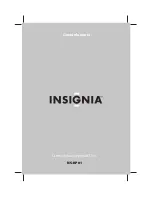
13
position, by pushing it in.
3.
Fasten the earth clamp to the workpiece. If
a metal bench is being used, make sure it
has also been connected to earth by means
of a cable with an adequate cross- section.
If the surface of the piece to be cut is
painted, rusty of covered with insulating
material, clean the surface so that
satisfactory contact between the
workpiece and the earth clamp can be
obtained.
4. M a k e s u re t h a t t h e t o rc h h a s b e e n
assembled
with the correct components
and that the
hole in the tip of the
PLASMA UNIT
King 25
King 50
Fig. 5
torch complies with the
values given in the table below according to
the cutting current. Simply unscrew the
nozzle, and replace
with one of the equired size.
5. Switch the unit ON using the main switch (see Figs 2 & 3), Select the
appropriate current in the case of King50. A hissing of air will be apparent
for a short period, as the air system is charged and the air filter drain valves
close
6. Check to ensure the amber lights for air supply, and torch safety, (i.e.
Thermal
Overload), situated on the front panel, are off. The green
light should be
‘ON’, indicating that the unit is supplied with
power.
7.
Press the torch button and check whether the pressure indicated by the
pressure gauge corresponds to the pressure required. At the same time,
the Pilot Arc will light.
Because these models are fitted with a Pilot Arc, cutting can commence
even on metal which is painted or coated. However, do be aware that
fumes may be given off by burning paint or coated
surfaces.
8.
The pilot arc will go out after 2-3 seconds. If in the meantime cutting has
not
started, the torch button should be pressed again
so that pilot arc will
relight.
CAUTION:
Avoid unnecessary lighting of the pilot arc, to prevent excessive consumption
of the electrode and nozzle.
9.
To start cutting, bring the torch with the pilot arc near to the workpiece and the
cutting arc between the torch and the workpiece will immediately light. If piercing
or cutting is to be carried out from the centre of the piece, start cutting with the
torch inclined and then straighten it slowly so that molten metal does not spray onto
the nozzle of the torch. If this operation is to be carried out on thicknesses greater
than 3-4mm, first drill a hole from which the cutting can
start.


































